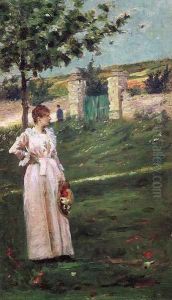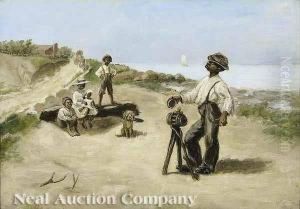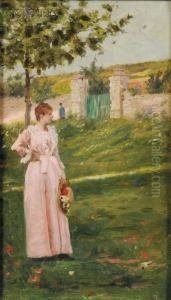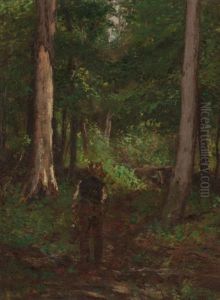Charles Stanley Reinhart Paintings
Charles Stanley Reinhart was an American illustrator and painter born on June 4, 1844, in Pittsburgh, Pennsylvania. He developed an interest in art at a young age and began his career in the arts as an apprentice at a lithography firm. His early experience in the commercial side of art would later influence his work as an illustrator.
In his mid-twenties, Reinhart decided to further his art education by moving to Europe. He studied at the prestigious Royal Academy in Munich, Germany, a hub for aspiring artists during that period. There he honed his skills in drawing and painting, developing a style that reflected the academic rigor of the European schools.
After his studies, Reinhart traveled to Paris, where he was exposed to the burgeoning Impressionist movement, though his own work remained largely within the realist tradition. His European experience was pivotal, giving him a broader perspective on art and influencing his approach to illustration and painting upon his return to the United States.
Reinhart’s return to America coincided with the golden age of illustration. He became a prominent illustrator for popular publications of the time, such as Harper's Weekly, Scribner's Monthly, and The Century Magazine. His illustrations often captured the social and cultural milieu of his era, with a particular talent for narrative scenes and a keen eye for detail and emotion.
Aside from illustration, Reinhart also produced a number of paintings. His subjects varied from genre scenes and landscapes to portraits. He exhibited his work at major venues such as the National Academy of Design and the Paris Salon, achieving recognition and accolades for his artistic talents.
Charles Stanley Reinhart's career was marked by his ability to bridge the worlds of fine art and illustration, a testament to his versatility and adaptability as an artist. His contributions to American art were cut short by his untimely death on August 30, 1896. Despite his early passing, Reinhart’s work remains a significant part of the narrative of American art in the late 19th century, reflecting the social currents and aesthetic shifts of his time.



